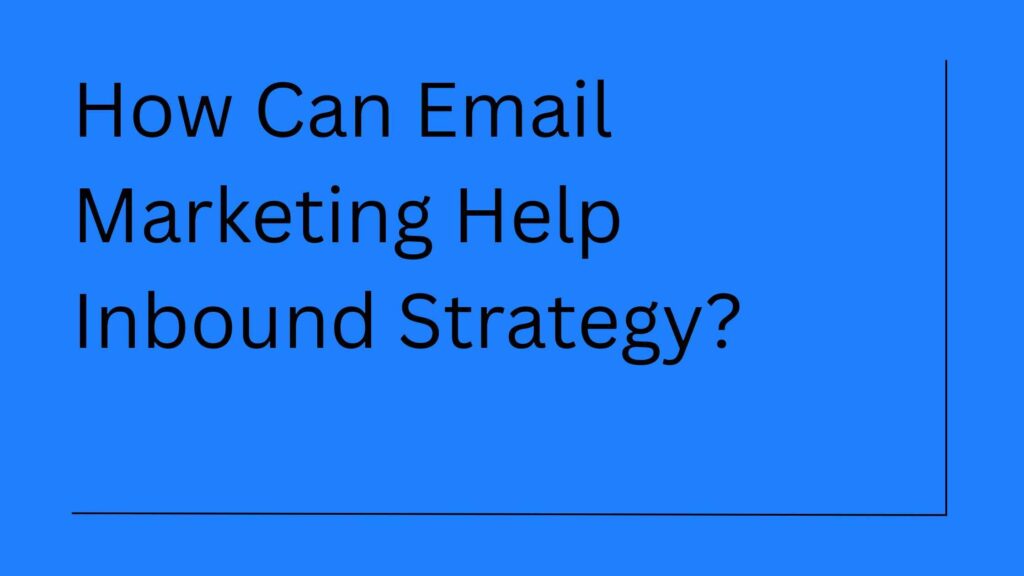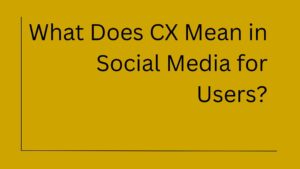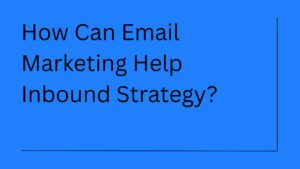Email marketing might feel a little old-school at first glance, like something that had its time in the spotlight and now just sits there in the background. But here’s the thing: it’s not just alive. It’s quietly doing some of the heaviest lifting in inbound marketing.
If you’re building your brand around helpful content, trust, and long-term relationships, email is your direct line. It doesn’t rely on algorithms. It doesn’t vanish after 24 hours. Because it goes straight to the place where your prospects still spend a surprising amount of time: their inbox.
But before we go too deep, let’s get clear on something important.
Inbound marketing isn’t about chasing people. It’s about attracting them by being useful, by showing up, and by offering value before asking for anything in return.
And email marketing? Well, it turns out email is really good at that.
How Email Marketing and Inbound Strategy Belong Together?
There’s a common trap people fall into: they treat email as an isolated tactic. Just another checkbox on a long list of marketing must-dos. But email is more than just a campaign delivery system. It’s one of the most foundational channels in inbound.
Think about it:
- People opt in to hear from you. That’s huge.
- You get to control the narrative, no fighting social media algorithms.
- It’s personal, it’s direct, and it scales better than you think.
When done right, email becomes the glue. The thing that connects your content, your offers, your sales funnel, and your brand voice into a coherent, ongoing conversation.
It’s not just about sending promotions or newsletters. It’s about continuing the relationship you started elsewhere on your blog, your YouTube channel, your podcast, or your landing page. Wherever.
1. It Helps You Nurture Leads Without Pushing
One of the core pillars of inbound marketing is lead nurturing. Not bombarding people with “buy now” messages. Just staying in touch, showing up regularly, and helping them along the decision-making journey.
That’s exactly what email does best.
When someone downloads your ebook or subscribes to your blog, that doesn’t mean they’re ready to become a customer tomorrow. But it does mean they’re open to hearing more.
With a thoughtful email series, you can:
- Educate them about the problem they’re facing.
- Offer stories, insights, and case studies.
- Show how your product or service might fit without forcing it.
It’s a gentle nudge forward, not a shove.
You’re helping them go from awareness to interest to trust, over time. And email gives you space to do that in a natural, low-pressure way.
2. You Can Personalize the Reading Experience
Not everyone needs the same message at the same time. Some people are new to your brand. Others have visited your pricing page three times already. Some clicked on that last link. Some didn’t even open the email.
With email marketing tools, you can segment your audience based on their behavior, interests, or place in the funnel. So, with the right email software, you can achieve miracles; choose one wisely. That means:
- New subscribers can get welcome emails with beginner content.
- Warmer leads can receive product comparisons, offers, or testimonials.
- Existing customers can be updated on new features or upsell opportunities.
It’s like having a one-on-one conversation with every single contact without actually writing thousands of emails manually.
This level of targeting makes your inbound strategy more efficient. You’re not just casting a wide net. You’re fishing with intent.
And when people feel like you’re speaking directly to them? They tend to stick around longer.
3. It Reinforces Your Brand Voice Over Time
Content isn’t just about information. It’s also about familiarity.
When someone hears from your brand consistently through blog posts, videos, and email, they begin to recognize your tone, your approach, and your style of thinking.
Email, especially, gives you room to lean into your voice.
Maybe your brand is casual and conversational. Maybe it’s expert and to-the-point. Whatever the case, email helps reinforce that identity every time you show up in the inbox.
It’s not always about selling or informing. Sometimes it’s about being present. About reminding people that you’re still here, still thinking about them, still bringing something useful to the table.
That matters. A lot.
4. It Drives Traffic to Your Other Inbound Assets
Let’s not forget one of the more direct benefits of traffic.
You probably already invest time and energy into creating blog posts, landing pages, and case studies as part of your SEO. Sometimes, maybe even tools or webinars. But if no one sees them, they don’t do much.
Email acts as a bridge.
Every new piece of content you publish? You can send it out to your list. And unlike social media (where the reach is mostly a mystery), email actually lands where people will likely see it.
So instead of crossing your fingers hoping someone stumbles across your new blog post, you just… let them know it’s ready.
You’re not yelling into the void. You’re speaking directly to people who already said, “Yes, I want to hear from you.”
That’s inbound in its purest form.
5. You Own the Channel
This part doesn’t get talked about enough, but it should.
Every other platform you use, Facebook, LinkedIn, Google, Instagram, you’re building on borrowed land. You don’t control the rules. Algorithms change. Costs rise. Reach drops. And when that happens, you’re at their mercy.
Email, on the other hand, is yours.
You own your list. You can back it up, migrate it, segment it, and use it however you like.
That kind of control is rare in digital marketing. It gives your inbound strategy long-term stability. No matter what happens on other platforms, you still have a direct line to your audience.
And that’s something you don’t want to take lightly.
6. It Can Be Automated (But Still Feel Human)
There’s a misconception that automation makes email feel robotic. But it doesn’t have to.
If you plan things thoughtfully, your automated emails can feel like they were written that morning just for that person. It is why knowing how to write an email is vital in the outbound space, particularly.
Some examples:
- A new subscriber gets a warm welcome series over a few days.
- Someone who downloads a guide gets a follow-up sequence with extra insights.
- A customer who just bought something receives helpful usage tips, then a feedback request.
You write the emails once, but they show up at the right time for the right person.
That’s the kind of balance that inbound thrives on relevance at scale.
And yes, you can still leave room for one-off broadcasts or personal touches. Automation isn’t all-or-nothing. It’s just another way to stay consistent.
7. It Builds Trust Through Repetition
Most people don’t buy from the first touch. Or the second. Or the third.
They buy after they’ve seen you enough times to believe you’re legit. That you’re not going anywhere. That you care more about their needs than your own goals.
Email helps create that kind of long-term familiarity.
It lets you drip value, little by little. A tip here. A story there. A link to something helpful. No pressure, no urgency, just presence.
And over time, people start to trust you.
That’s what inbound is really after, not quick wins, but lasting relationships.
8. It Complements Every Stage of the Funnel
Inbound marketing isn’t one-size-fits-all. You’ve got different people at different stages:
- Some are just discovering their problem.
- Some are evaluating options.
- Some are ready to decide.
Email marketing adapts to each of these stages.
Let’s say you run a SaaS platform:
- Top-of-funnel? Share educational content guides, blog posts, and explainer videos.
- Middle-of-funnel? Send comparison charts, customer testimonials, or FAQs.
- Bottom-of-funnel? Offer a free trial, a case study, or a time-sensitive incentive.
The beauty is, you’re not interrupting people. You’re just walking alongside them, at their pace.
And because you can track who opened what, clicked where, or ignored which email, you can keep fine-tuning the journey to make it even smoother.
A Quick Reality Check Between Email and Outbound Marketing
Now, all of this sounds great on paper. But let’s be real, email marketing isn’t a magic button.
Plenty of people run email campaigns and see zero results.
That usually happens when:
- They buy email lists (please don’t).
- They send stuff that’s all about them.
- They never clean up inactive subscribers.
- They ignore how their audience actually thinks or feels.
Email only works when you earn your way in with permission, relevance, and consistency.
Inbound isn’t about shouting louder. It’s about showing up better.
What Can You Actually Do Next with Email with an Outbound Strategy?
If your inbound strategy is already rolling, but your email feels like an afterthought, here’s where you might want to start:
- Audit your list – Who’s on it? Where did they come from?
- Segment your audience – Separate new leads from old customers.
- Build a welcome series – Help new subscribers feel at home.
- Promote your best content – Use email to revive old blog posts or guides.
- Test your voice – See what tone gets the best response.
- Be consistent – Don’t vanish for weeks, then suddenly reappear.
It doesn’t have to be complicated. It just has to be thoughtful.
Final Thought
At last, email marketing isn’t flashy. It’s not the newest trend or the hottest tool in the kit. But it works.
And when it’s part of a bigger inbound strategy, one built on content, trust, and helping people, you start to see just how powerful it really is.
You’re not just sending emails.
You’re continuing a conversation. You’re earning trust. You’re staying close quietly, consistently, and with purpose.
And that’s where email shines. Right there in the inbox. Right where it belongs.






2 thoughts on “How Can Email Marketing Help Overall Inbound Strategy?”
Thanks for sharing this information. Email is still relevant and a gold mine in my pov.
Good one, keep going and cover all the topic hubs. I expect you would do.